Lhosar ( New Year) - 2025
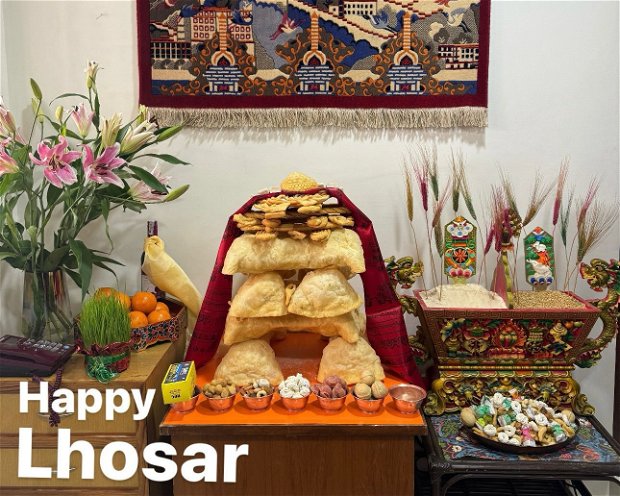
Trip Facts:
Tour Name : TIBET FESTIVAL - LHOSAR ( NEW YEAR) 2025
Entry / Exit : Fly in / Drive out
Grade : Easy to Adventurous
Max Elevation : 5220m/17122Ft.
Accommodation : Hotel /Guest house
Meal : Bed & breakfast
Transport : Flight & Private vehicle
Tour Days : 08
Date : 28 February, 2025
Trip summary:
You will take part in most of the celebrations beside regular sightseeing and visiting places of interest, you will visit major cities of central Tibet such as Lhasa, Shiagtse, Gyantse, beautiful Lake, high passes and many more.
Tibetan New Year, or Losar, is a vibrant celebration deeply rooted in Buddhist traditions, predating Buddhism itself. Originating among Tibetan nomads who marked the harvest season as the start of the year, Losar is now celebrated on the first day of the first month of the Tibetan calendar.
- Pre-Losar Activities
On New Year’s Eve, Tibetans prepare a special handmade noodle dish called Gutor, filled with symbolic items like chili, salt, or coal, each representing traits such as talkativeness or misfortune. Families clean their homes, especially kitchens, to dispel negative energies. Rituals include burning torches and firecrackers to drive away evil spirits.
- New Year’s Day
Families wake early, don new clothes, and place offerings on shrines, often shaped from dough as symbolic figures. A traditional breakfast includes Kapse (fried cakes) and Chang (barley wine). Women fetch the first water of the year from rivers or wells, believed to bring blessings. - Subsequent Days
On the second day, people visit friends and relatives with qemar, a decorative barley and butter offering, sharing yak butter tea and traditional foods. By the third day, Tibetans visit monasteries, make offerings, burn aromatic herbs, and hang new prayer flags for peace and prosperity.
Losar blends spiritual rituals with joyful family gatherings, reflecting Tibetan culture's deep spirituality and warmth.
NOTE: The tour can be customized to accommodate the interests of our guests.
Gallery
Itinerary
27 February: Fly to Gongkar Airport & drive to Lhasa (3600m/11811ft) 65 km, 1hr:
Your Tibetan guide will be waiting to welcome you at Gongkar Airport. After immigration formalities, you will drive for around 45 minutes to reach the old city, Lhasa (3660 meters). After checking in at your hotel, you are advised to take rest, drink plenty of fluids and most importantly let your body get used to Lhasa’s high altitude. During afternoon you can go around the hotel area for light walk and sightseeing. O/N at Hotel in Lhasa (BB)
28 February: Sightseeing Tour of Potala palace, Jokhang Temple and Barkhor Market:
After breakfast you will be briefed about the day’s program. Then your guide will take you on a tour to majestic Potala palace, Jokhang Temple and Barkhor Market respectively.
Potala Palace: Also known as the “winter palace”. The imposing structure of the palace dominates the landscape of Lhasa. is a 13th storied complex monument rising to a height of above 117m which houses 10,000 shrines and over 200,000 images and about 1000 rooms.As you are guided through the ancient chambers of the palace, you get to see Tibetan art at its best. The Potala Palace has a vast array of intricate Tibetan murals and beautiful statues. You will also get to view the tombs of the eight Dalai Lamas.
Jokhang Temple: Jokhang a seventh-century geomantic temple at the heart of Lhasa is the most sacred temple of all Tibet, housed the most holy statue of Rowo Rimpoche ( Sakyamuni Buddha) crafted when he was just 12 years old. Jokhang (Chuklakhang) is considered to be a Power Place in all Tibet. Queen Bhrikuti, a Nepalese princess married to King Songtsen Gampo founded Jokhang Temple and in recognition of Queen Bhrikuti the main gate of the temple faces west towards Nepal. The most impressive structure of the Jokhang Temple is the many chapels surrounding the temple.
Barkhor Market (Bazaar): The most popular Barkhor Market (Bazaar) is a square where Tibetan handicraft items, Buddhist artifacts, carpets, paintings etc. are all in sale for your delight. At the end of the day your guide will escort you back to your hotel. Lhasa offers variety of Restaurant for both Lunch and Dinners. O/N at Hotel in Lhasa (BB)
Note: Since only a limited number of visitors are allowed inside the Potala palace every day, the order of sightseeing places will be decided upon by your guide.
01 March: Sightseeing Tour of Drepung Monastery & Sera Monastery:
After breakfast your guide will take you to Drepung & Sera Monastery respectively.
Sera Monastery: This monastery is approx. 5km drive away from Lhasa. Sera Monastery was founded in 1419. It sits in the prettiest and most charming atmosphere at the base of Mount Purbuchok. Sera Monastery used to be an important center for learning where in the past approx. 5,000 to 6,000 monks resided. Currently about 550 monks are supposed to be living there. The important structures inside the monastery include Coqen Hall, (the main assembly hall), three Zhacangs (Buddhist colleges) and twenty-nine Khangtsens (monk dormitories).The most intriguing feature here is the nine-meter image of Maitraya which was erected in 1419; here one can also witness the practicing of debate among the monks, who pitch their knowledge against each other.
Drepung Monastery: This Monastery is 8 km west of Lhasa. One of the three great Gelukpa Monasteries near Lhasa, the other two being Sera and Ganden. Until the occupation it served like its two sister monasteries as centre for learning and monastic training to which monks from all over Tibet would come to spend as long as 15 years methodically studying and debating the meaning of the Buddhist scriptures. For centuries it existed as a small monastic township housing thousands of fully ordained monks and other functionaries. It was founded in 1416 by Jam yang Chöje Tahsi Palden, a disciple of Tsong Khapa. O/N at Hotel in Lhasa (BB)
OR:
Tibetan Village Tour : Shal is located approx 10 km (half an hr drive) east of Lhasa with population with approx 150 families. Shal is an old Village town and most of the people are farmers or nomads. Village is quite popular for potato and barley farming and now interestingly, they have started involving locals, domestic clients self farming. One can go for an hour hike up the village where a holy mountain is located standing up tall overlooking the village. For those fit people can further climb the mountain, if time permits. The place offers a breathtaking view of the high mountains, fresh flowing stream and the open green pastures. The best part of this hike is the opportunity to see the nomad’s community, during summer time from May to October when they live in the pastures grazing their cattle. There is nunnery in the village to visit, if time permits. O/N Hotel (BB).
02 March: Drive to Shigatse (3,900m/12795ft) via Gyantse (3950m /12956ft) 360km, 5 hrs:
Leaving Lhasa and a drive of 360km, taking about 5 hours including break for lunch at one of the villages’ en-route. We will drive over two spectacular high passes – the Kampa La at 4750m and Karo La at 5010m, over, and along the beautiful deep blue green Lake called Yamdrok Lake or Turquoise Lake. The landscape of the Tibetan Plateau is truly unusual and spectacular. We will arrive in Gyantse an old Tibetan Town against a backdrop of magnificent 14th-15th century fortresses and temples. Here we will visit Pelkhor Chode Temple & Khumbum respectively.
Pelkor Chöde:Work started on the monastery by Rabten Kunzang in 1418 under spiritual guidance of Tsongkhapa’s disciple Khedrup Je, and was completed seven years later in 1425. Remarkably preserved, many statues and paintings inside date back to the time of its founding. Although the shrines are predominantly Shakya, it was traditionally unaffiliated and used as common assembly place. Today it is looked after by the Gelukpas.
Kumbum: Rabten Kunzang in July 1427 embarked on his most ambitious project – the construction of the Kumbum (or Tashi Gomang Chöten), which was probably completed in 1439. the gilded copper roofing and the final consecration ceremonies, however not completed until 1474. the term Kumbum means having 100,000 images and refers to a particular style of stupa construction in which chapels are housed in ascending symmetrical stories.
Further we will drive for about an hour and we will reach the 2nd Largest city of Tibet – Shigatse. O/N at Hotel in Shigatse (BB)
03 March: Drive to Shegar (4200m/13776ft) 300km, 5hr:
After breakfast you will be visiting Tashilumphu Monastery. This monastery is one of the largest functioning monasteries in Tibet and there is much to explore within its high surrounding walls. There are about 39 amazing chapels inside including the huge Maitreya Chapel coated with gold; its workmanship certainly impresses everyone.After detailed visit of Shigatse, we will visit the local markets for shopping and local sightseeing. Then travel along the Friendship Highway amidst picturesque landscape driving for approx 5 hrs. past small town of Lhatse. You will be crossing one of the highest Gyatso la pass (5220m) of the tour. As the route opens into plains, many monasteries and camps of nomadic herders become visible en route to Shegar. O/N at Hotel in Shegar (BB)
04 March: Trip to Rongbuk (5100m/16728ft), drive to Old Tingri (4300m/ 14107Ft.) 200 km, 4 hrs:
Away from Shegar, you will drive to the south crossing Pang La pass at 5150m. Along the drive you can bask in the splendor of majestic views of snow-capped peaks from Makalu to Shishapangma. After driving for approximately 100 km, you eventually reach Rongbuk at 5100m. You can then view spectacular sight of Mount Everest. You have the opportunity to explore Everest Base Camp (5150m.) which is approx. 15 minutes walk further. The base camp itself is dry and barren, but the views of Everest more than compensate for it. After an awesome experience you will be drive back to Old Tingri for your overnight stay. O/N at Hotel in Old Tingri (BB)
05 March: Drive to Kyirong (2300m/7544ft) 240km, 4hrs:
We drive along Peiku Tso ( Lake) and arrived Dzonkha (Kyirong Xian), then drive further 70km cross high pass Yangdo La 5326m/17470ft to Nepal border town of Kyirong. O/N at Hotel/ Guest house in Kyriong (BB)
06 March: Drive to Kathmandu (1300m/4265ft) 170 km, 10hrs:
After breakfast, drive 25 km to the border and the immigration point. After Chinese Immigration formalities we cross into Nepal by foot and meet Nepali representative and vehicle at the Nepal side called Timure, Rasuwa Ghadi. After Nepali immigration formalities, you drive to Kathmandu. It is an interesting combination drive of dirt and paved road along the Langtang national park through smaller town of Syabrubensi and Dunche (ideal place for lunch) and finally reach the main national highway at Galchi. You will experience more traffic along the road. Tour Concludes.
Rates
SERVICES INCLUDED:
·Twin sharing accommodation as per the itinerary on bed & breakfast (BB) basis.
·English speaking Tibetan Guide.
·Transportation as per the itinerary by necessary vehicle.
·Monastery entrance fee.
·Tibet Travel permits.
·Emergency mineral water in the vehicle.
·Emergency portable oxygen cylinder in the vehicle.
·Trip briefing by Tibet expert & entertain question.
·Trip Information pack.
·Gift pack (prayer flag or string of flag & paper prayer Lungta).
Note: Offer Prayer flag or Lungta (string of prayer flag) in high passes, temple for good fortune or long life.
SERVICES EXCLUDED:
·Tibet Visa Fee as per the nationality
·Airfare Kathmandu – Lhasa– Kathmandu (Fare as per availability).
·Travel insurance.
·Expenses during any rescue operation.
·Lunch and Dinner (US$ 10 per person)
·Alcoholic beverages & bar bills.
·All expenses of personal nature, phone calls, laundry etc.
·Gratuity to staff.
·Services of Porterage and other vehicles in between in case of landslides and other natural calamities beyond our control and expenses incurred during rescue services.
·Services not mentioned herein.

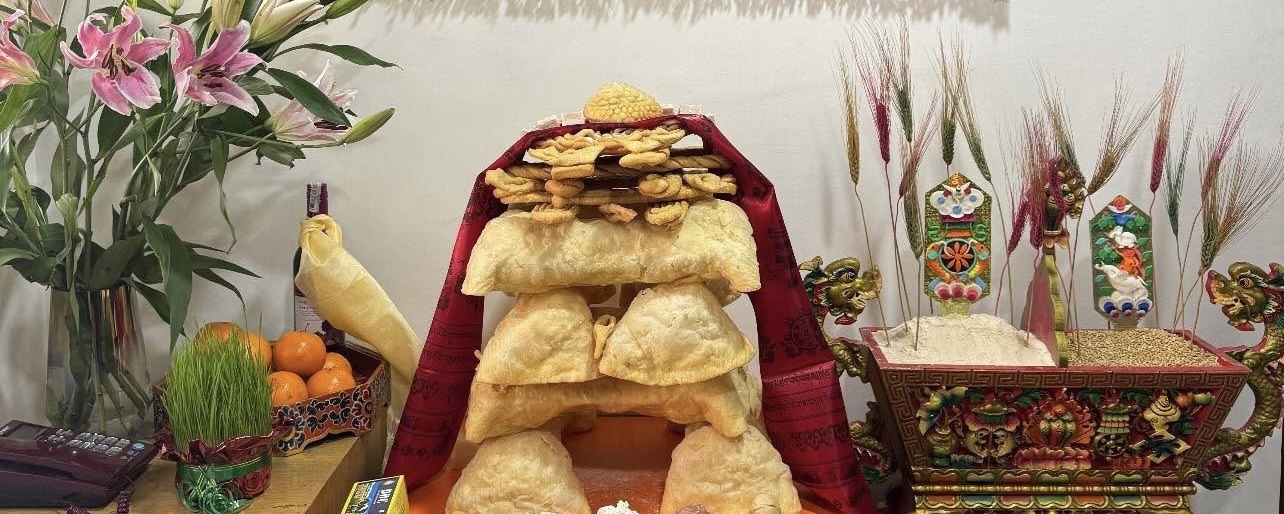
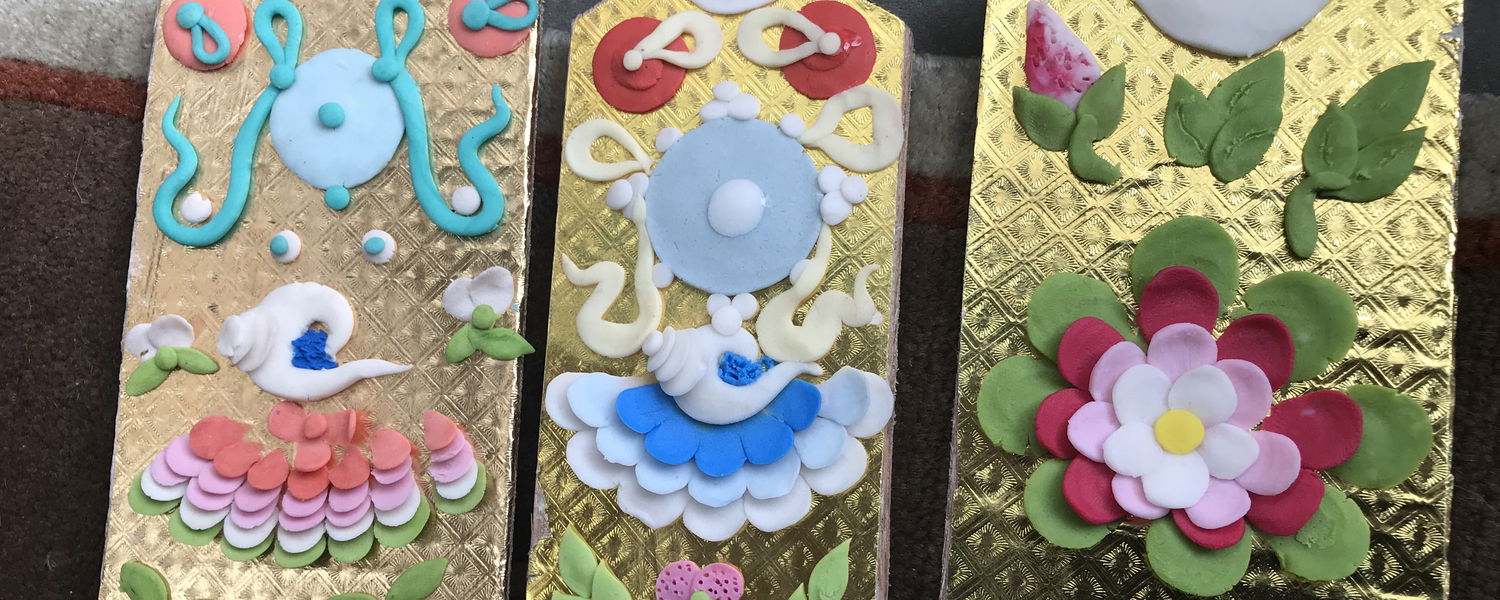

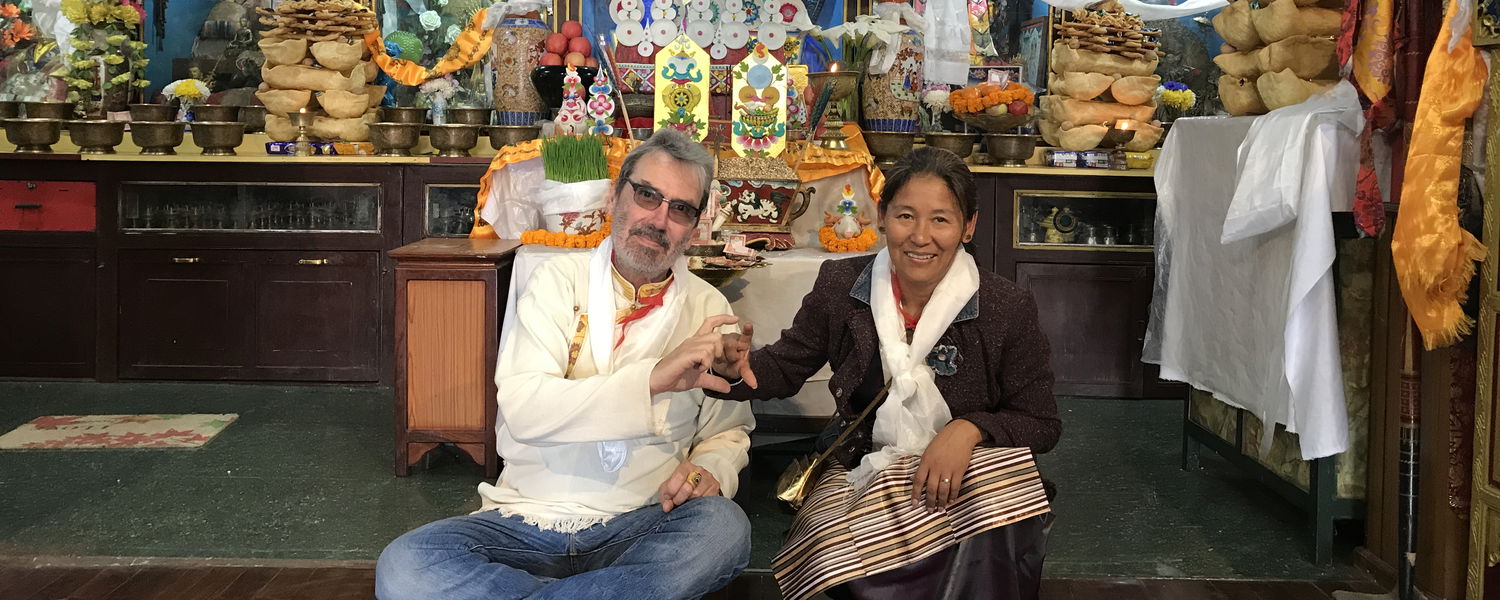



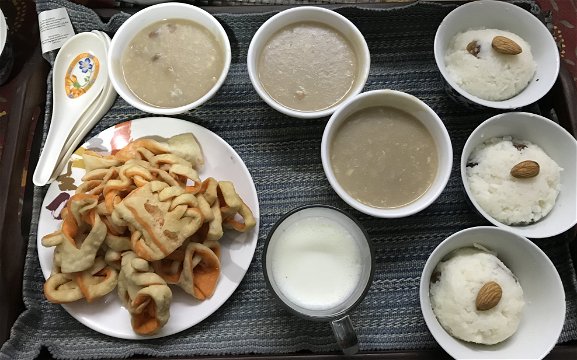







Share This Page